11.3 Specifying Your Availability
The action allows you to specify which resource requests with a delegate assignment you are unavailable to work on during a particular time period. During the time period when you are unavailable for a particular request, the user delegated to act on that request can work on it.
If you prefer not to specify your availability for each request definition individually, you can use the action to establish global settings pertaining to delegation.
HINT:Before using the action, you need to have at least one delegate assignment to work on. You need to have your team manager (or the Provisioning Application Administrator) create delegate assignments for you.
11.3.1 Setting Your Availability Status
-
Click in the group of actions.
The user application displays the Edit Availability page. If you do not have any existing availability settings, the display list is empty:
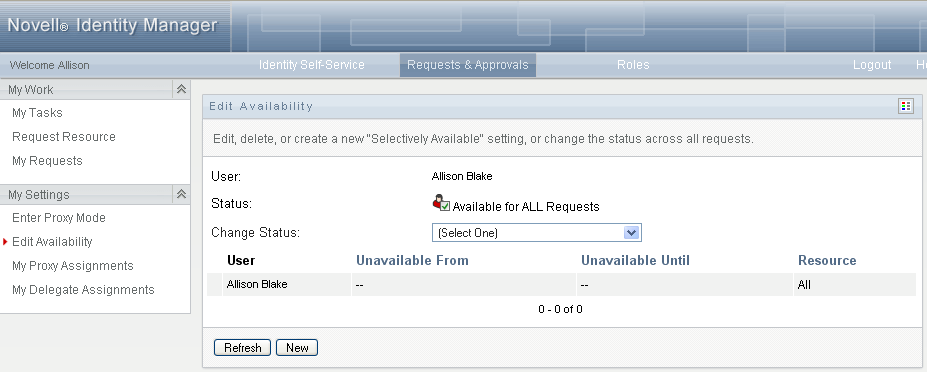
If no delegates have been assigned for you, the user application displays a message indicating that you cannot change your status on the Edit Availability page.
If you have one or more availability settings, the display list shows these settings:
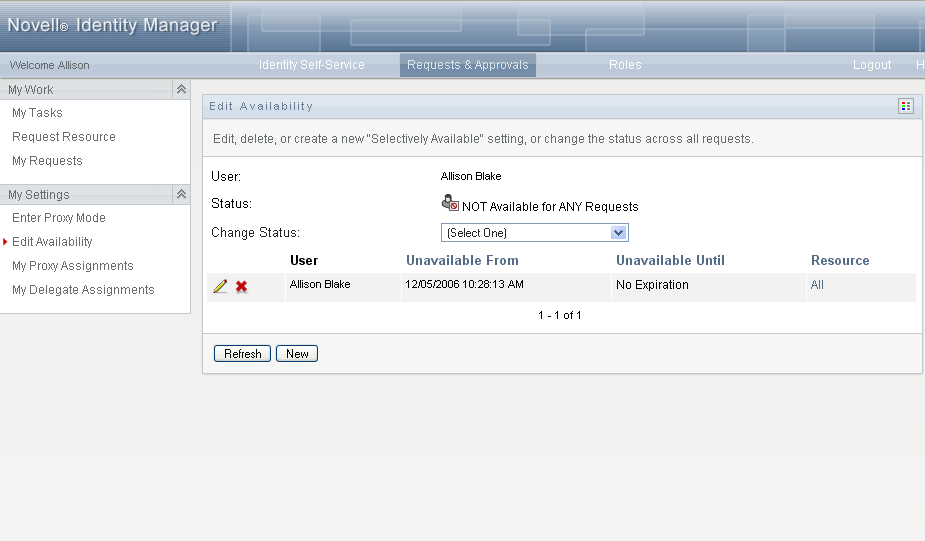
-
To see details about a particular resource associated with an availability assignment, click the name of the resource:

The page then displays a pop-up window that provides information about the delegate assignment:

This information is particularly helpful in situations where the same resource name appears more than once in the availability settings list.
-
Specify your status by selecting one of the following options in the drop-down list:
11.3.2 Creating or Editing an Availability Setting
-
To create a new availability setting, click (or select in the drop-down list).
-
To edit an existing setting, click next to the setting you want to modify:

The user application displays a set of controls that allow you to specify the time period for which you are unavailable and select the requests to which this setting applies.
The list of requests displayed includes only those that have a delegate assignment.
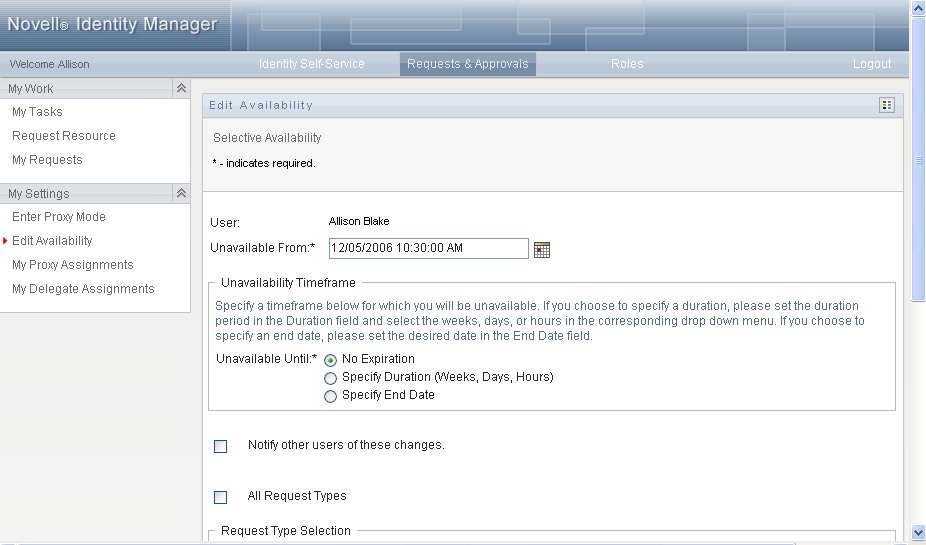
-
Specify the time period during which you will be unavailable:
-
Specify when the time period begins by typing the start date and time in the box, or by clicking the calendar button and selecting the date and time.
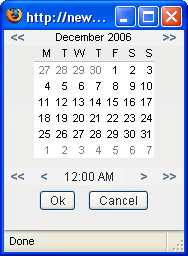
-
Specify when the time period ends by clicking one of the following:
The end date you specify must be within the time period allowed by the delegate assignment. For example, if the delegate assignment expires on October 31, 2007, you cannot specify an expiration date of November 15, 2007 for the availability setting. If you specify an expiration date of November 15, 2007, it is automatically adjusted when it is submitted to expire on October 31, 2007.
-
-
Specify whether you want to send e-mail notifications to other users by filling in these fields:
-
Select one or more requests in the list, and click .
On this page, you select the types of requests not to accept during the time you are unavailable. This has the effect of delegating these requests to other users.
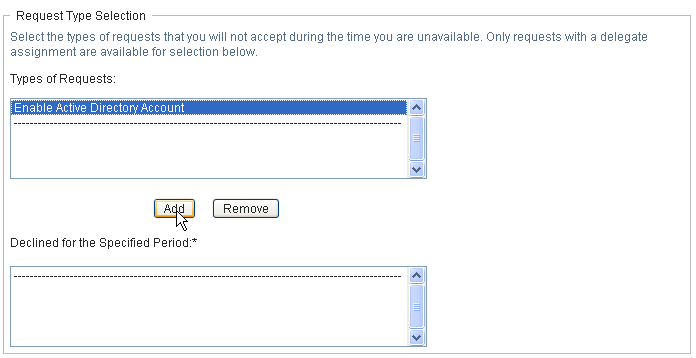
Each request you add is included in the list.
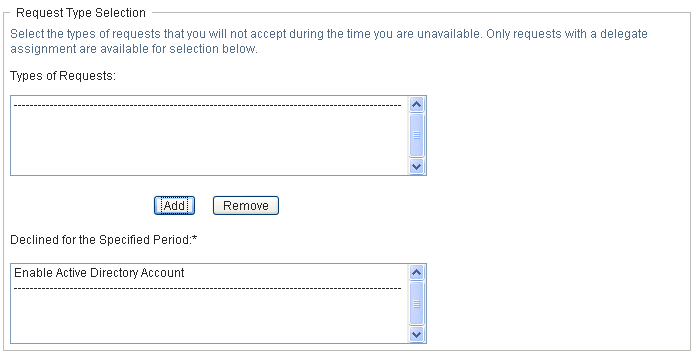
-
To indicate that this availability setting applies to all request types, click instead of selecting the request types individually.

The check box is only available when the resource search criteria for the delegate assignment is set to .

-
To remove a request from the list, click .
-
Click to commit your changes.
11.3.3 Deleting an Availability Setting
To delete an existing availability setting:
-
Click next to the setting:
